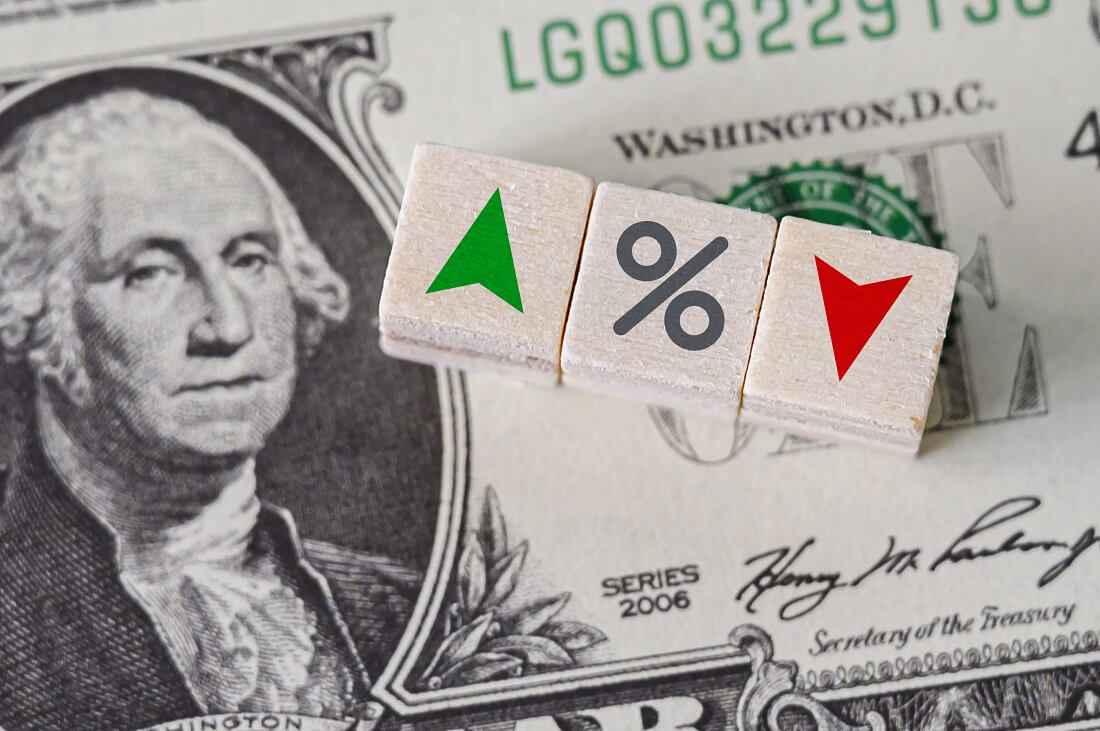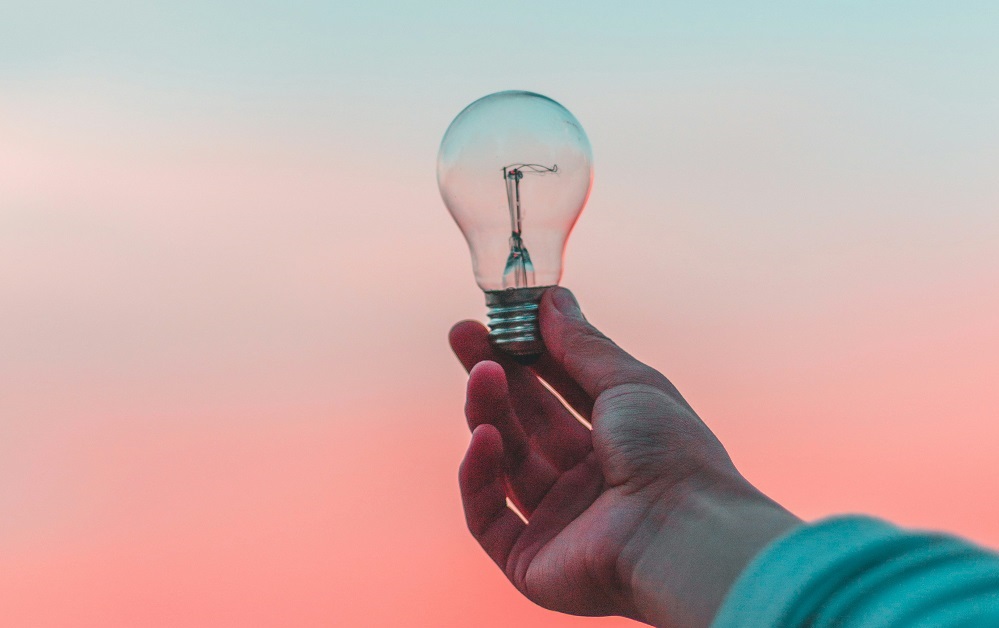As the United States continues to witness an increase in the number of COVID-19 infections, the economic state of the country remains unstable. Although, the industry and employment landscape in the US continues to recover, the effects of the pandemic and nationwide lockdowns will be seen on the GDP in Q1 of 2021, according to Eliza Winger, a Bloomberg economist.
The impact of the restrictions implemented to fence the spread of coronavirus was evident from an increase in the number of applications for unemployment insurance and a decline in restaurant bookings. However, the demand for housing remained strong and the retail sales saw an increase due to the issuance of stimulus payment.
The US Economy in the year 2020
Before the pandemic, the industrial average of the Dow Jones was reaching record highs, the employment rate was at a decent 3.5%, and the core inflation was reasonable at 2.4%. Then, the coronavirus pandemic changed everything. Nationwide lockdowns became the norm when the US government declared a national emergency in order to stop the coronavirus from spreading. The shutdown caused great economic turmoil with lay-offs and unemployment levels at record high, decrease in consumer spending, and stock market crash. Within no time, recession was staring us in the face. According to the National Bureau of Economic Research, the US economy witnessed a peak in the monthly economic activity in the month of February 2020, and that peak marked the end of the expansion that commenced in June 2009, also marking the start of recession. This was the longest ever expansion in the history of US and it lasted 128 months.
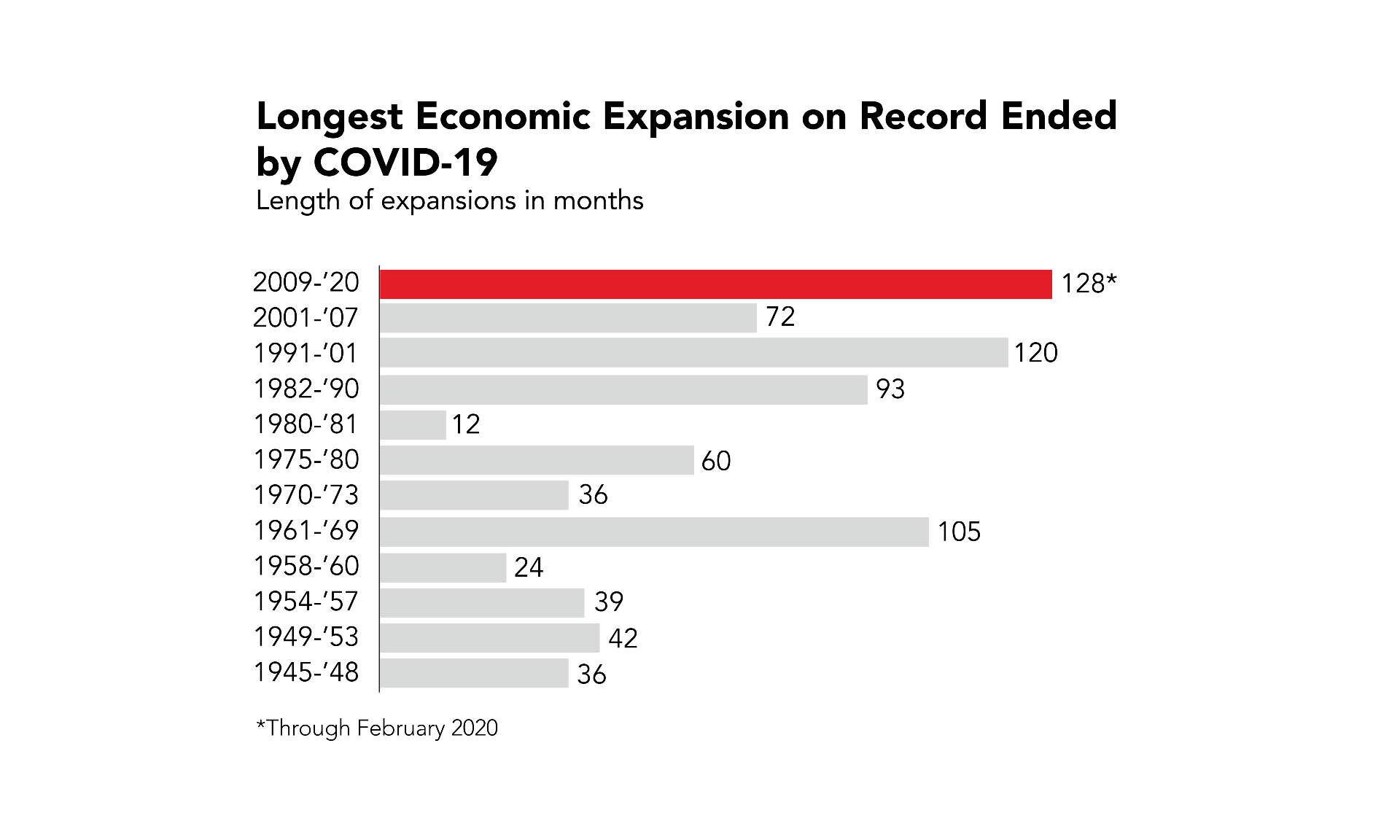
In Q2 of 2020, the economy fell by a record 31.4%, while the quarterly GDP contracted more than 10%, which hasn’t been witnessed since the record-keeping began in 1947. In April, as companies were furloughing employees, the unemployment rate reached a high of 14.7%. As the restrictions eased gradually, the economy observed a rebound in Q3 of 2020, reaching a revised annual rate of 33.4%. Several renowned economists predicted that at least 100,000 small businesses would permanently close by spring. After witnessing a free fall in the first half of 2020, the US economy began observing a mediocre U-shaped recovery at the start of 2021.
The recovery will be slow in 2021
According to Goldman Sachs, the year 2021 will be prosperous for the United States, but there is a possibility that it might get worse before it gets better. The recovery path seems a little bumpy as the winter sets in, and the country witnesses a surge in the COVID-19 numbers. The reacceleration of recovery can be expected when the effect of vaccine is evident. The widespread distribution of the coronavirus vaccine will have a great impact on the recovery. As predicted by The Federal Reserve and several experts, the economy will slouch through 2021 or 2022.
.jpg)
The financial markets in the US had attained new peaks by the end of 2020, hoping that the much-anticipated COVID-19 vaccine would contribute to a V-shaped recovery. The stocks also got a boost due to ultra-low policy rates being maintained by major central banks. Although the performance is yet to reach the pre-pandemic levels, Q3 of 2020 witnessed a robust economic rebound at an annual rate of 33.4% as businesses started to gradually open.
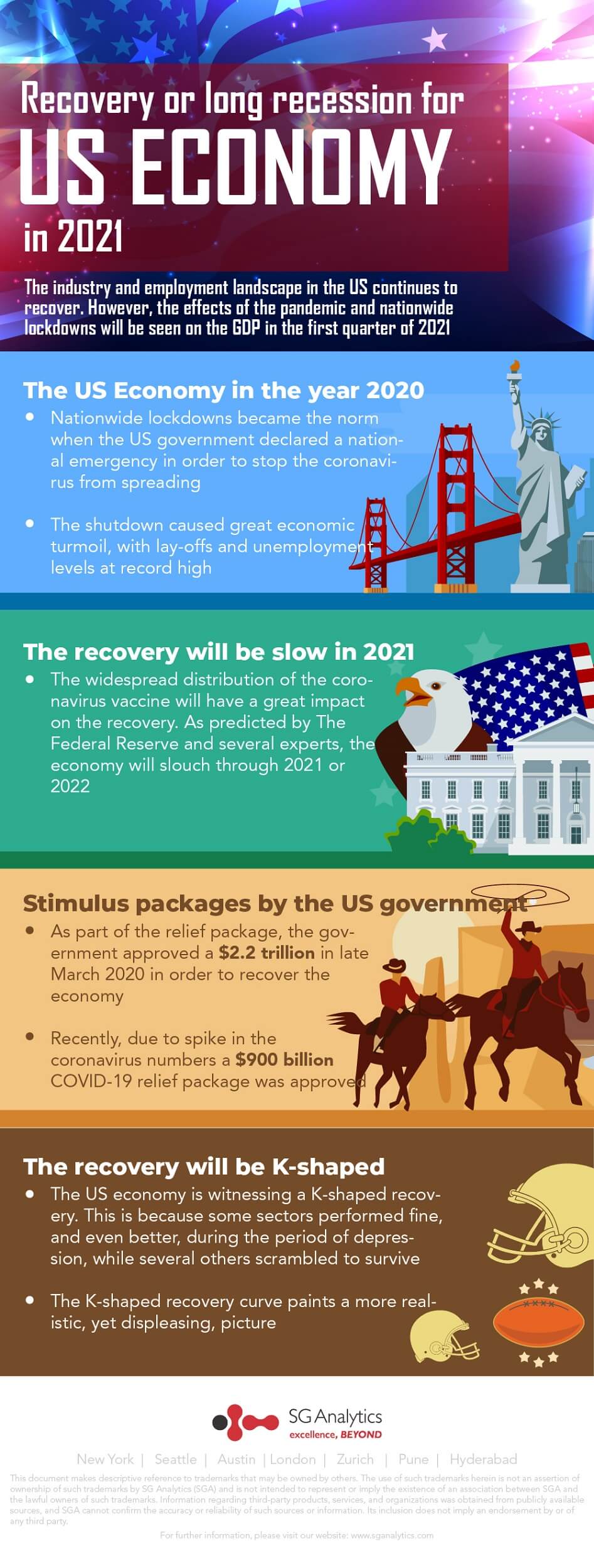
What about relief?
The pandemic-induced recession had destabilized individuals and organizations across the United States. Constituting the relief package, the government approved $2.2 trillion in late March 2020 in order to facilitate economic recovery. The recent spike in the coronavirus numbers added to the pressure on the lawmakers, making them ultimately pass a $900 billion COVID-19 relief package along with regular government funding of $1.4 trillion for the remaining fiscal year.
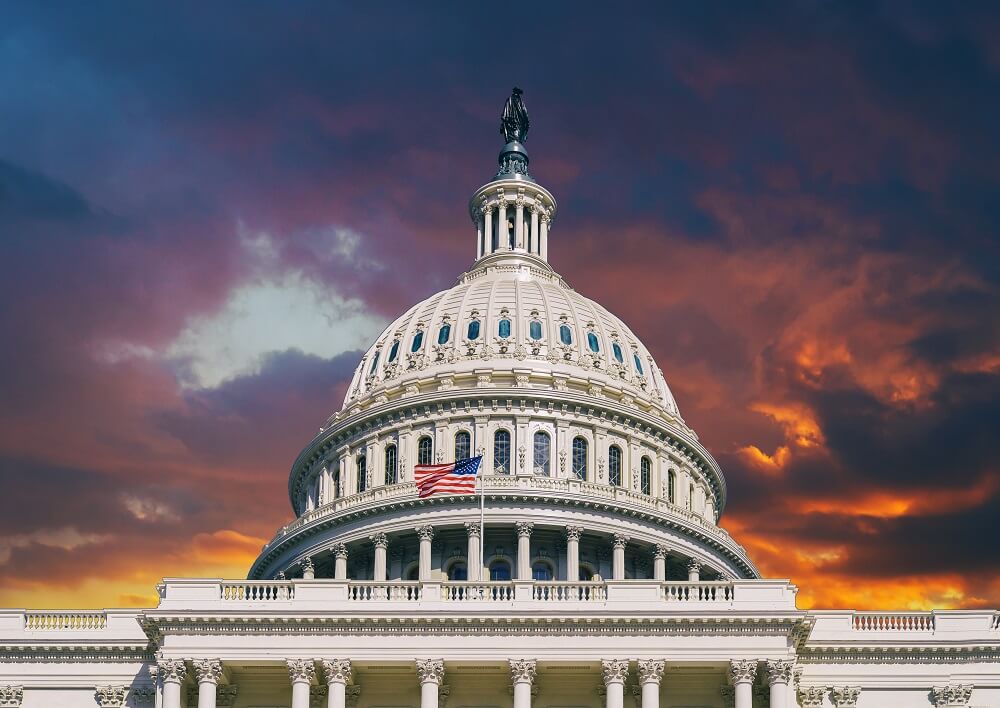 Although the relief package would act as a cushion for the impact of COVID-19 on the economy, it would not be enough to strengthen the economy, as suggested by some economists and lawmakers. According to them, the economy would need more aid to stabilize. According to Ryan Sweet, Senior Director, Moody’s Analytics, even though the relief packages are being approved more than expected, the dearth of additional aid will result in layoffs and cuts in spending. Additionally, the latest stimulus package can help divert the path toward a double-dip recession.
Although the relief package would act as a cushion for the impact of COVID-19 on the economy, it would not be enough to strengthen the economy, as suggested by some economists and lawmakers. According to them, the economy would need more aid to stabilize. According to Ryan Sweet, Senior Director, Moody’s Analytics, even though the relief packages are being approved more than expected, the dearth of additional aid will result in layoffs and cuts in spending. Additionally, the latest stimulus package can help divert the path toward a double-dip recession.
The recovery will be K-shaped
The US economy is witnessing a K-shaped recovery. This is because some sectors performed fine, or even better, during the period of depression, while several others struggled to survive. The K-shaped recovery curve paints a more realistic, yet displeasing, picture. According to JP Morgan’s analysis, the recovery path is bifurcated into public-sector institutions and large firms with direct access to stimulus packages provided by the central bank and the government, which will help few areas of the economy recover faster than others. The ones remaining include blue-collar workers, middle class population, and small and medium-sized enterprises (SMEs).
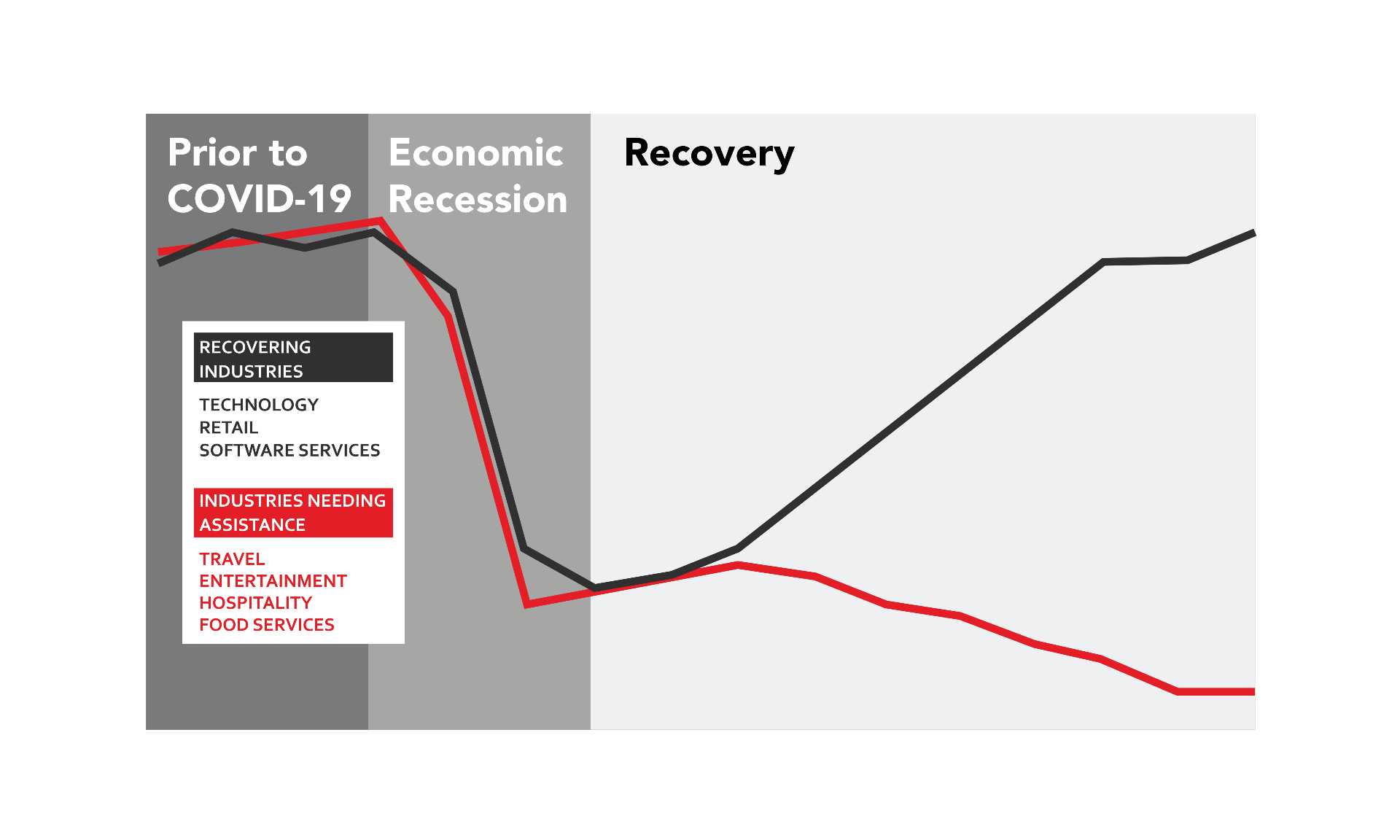
Since small businesses contribute 44% to the US economic activity, the K-shaped recovery is a falling tide that will sink all boats (World Economic Forum). The manifestation of the K-shape is picking up strength and, according to a recent report by Yelp Economic Average, while several businesses re-start their operations, many remain closed. This crisis is expected to have an exceptionally long recovery curve, owing to the fact that the level of unemployment in a recession is directly proportionate to the length of the recovery curve.
According to Adam Posen, President of the Washington-based think tank Peterson Institute for International Economics, this recession has been more unequal as compared to others as the top 1% or 5%, the very wealthiest, gain through equity shares of the companies that are performing well even during these hard times.
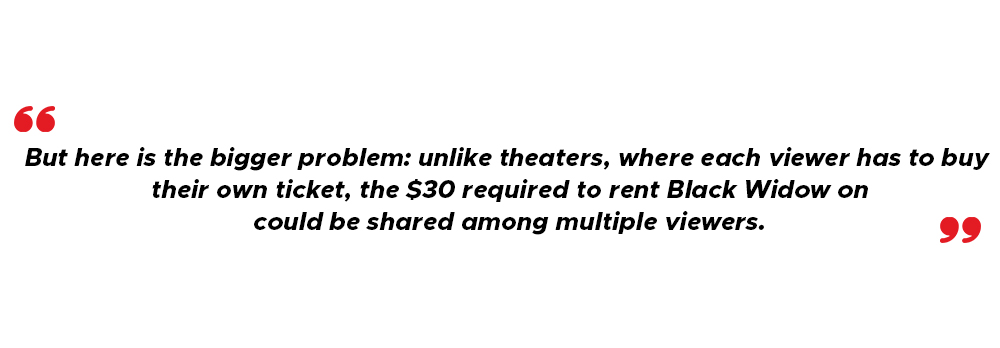
How to overcome the K-shaped curve with a tech-led strategy
The best way for businesses to come out of this recession is to adopt a tech-led strategy. Businesses are increasingly turning toward RPA (robotic process automation), AI (artificial intelligence), and AR (augmented reality) to increase sales on various digital platforms. Concerns that aren’t being addressed by central bank/government stimulus packages can be addressed with the use of technology. This can ensure that businesses remain operational in tough times and help in shortening the unemployment curve.
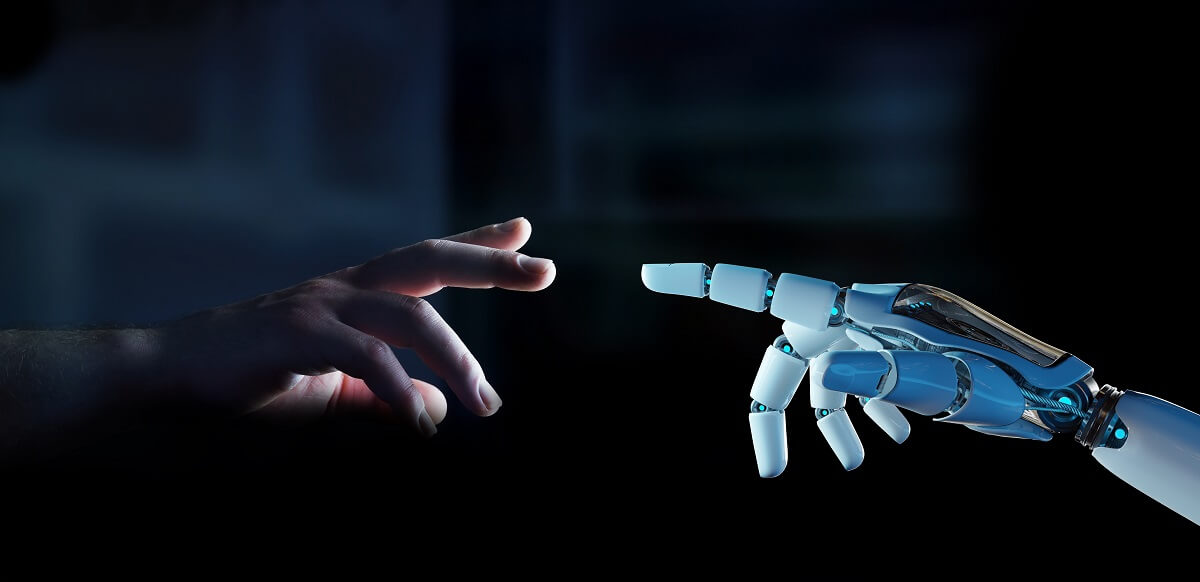
Below are a few tips that can help businesses realign their strategies to the several “new normal” conditions we are required to adjust with.
- Businesses must continue experimenting with strategy. Rather than a well-defined strategy, it is imperative that businesses move toward data-driven strategies.
- Companies must have flexible goals, rather than pin-pointed goals.
- They must hire people who are adaptable and flexible in their roles, rather than hunting for the best-fit.
- Business processes should be more resilient to chaos.
The importance of technology for helping businesses survive this pandemic-induced recession can’t be emphasized enough. As COVID-19 continues to alter customer behavior and preferences, making our lives increasingly digital-dependent every day, it is imperative that companies adopt technology-led solutions to get back on their feet.
Conclusion
The financial positions of individuals in the US should bolster with the recently approved aid after President-elect Joe Biden took office (Bloomberg). Although, the near-term picture is hazy for several businesses and workers, there are hopes of acceleration in the economic rebound with the rollout of the coronavirus vaccine. According to Goldman Sachs, in 2021, the GDP will grow at a pace of 5.3%. Additionally, the unemployment rate is expected to fall to 5.3%


